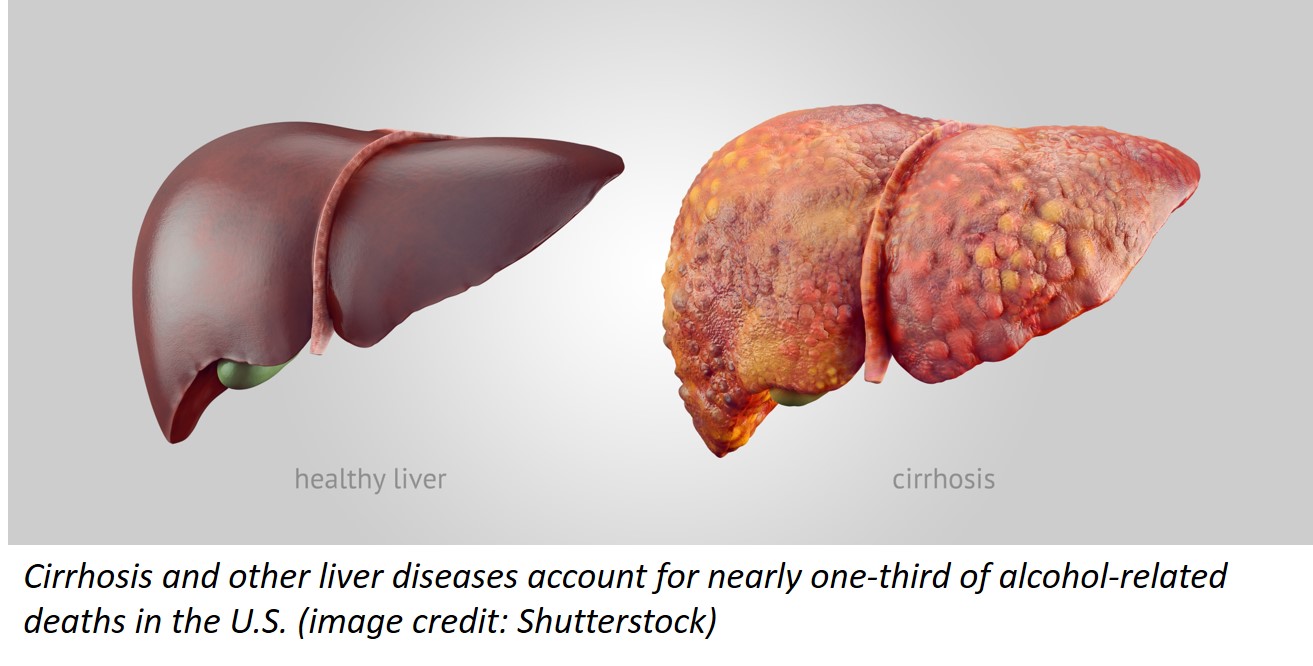New gene associated with reduced risk for cirrhosis
NIH-funded study provides hope for better disease prediction.

What: An international team of scientists supported by the National Institute on Alcohol Abuse and Alcoholism (NIAAA), part of the NIH, has identified a novel association between the gene FAF2 and a reduced risk for alcohol-associated liver cirrhosis (ALC) in people who drink heavily. Also confirmed by the study were four additional genes, three previously found to be associated with an increased risk and one with reduced risk of ALC in people who drink heavily. All of the genes appear to be involved in fat metabolism in the liver. ALC is a major source of alcohol–related morbidity and mortality worldwide. Taken together, the new findings help solidify our understanding of ALC, particularly with regard to the connection between fat metabolism and vulnerability to cirrhosis. Genetic risk factors combined with clinical and phenotype risks, offers the potential for improved disease prediction and the realization of the promise of personalized medicine.
Article: T-W Schwantes-An, et al. Genome-wide association study and meta-analysis on alcohol-related liver cirrhosis identifies novel genetic risk factors. Hepatology (published online Aug. 28, 2020).
Who: NIAAA Director George F. Koob, Ph.D., is available to comment on this research.
Funding: This research was funded by NIAAA grant U01- AA018389 to support an international research consortium -- the GenomALC – the largest genome-wide association study of alcohol-related cirrhosis conducted to date. Additional support was provided by the Swiss National Funds and the Swiss Foundation for Alcohol Research, and the National Health & Medical Research Council of Australia.

